Hi everyone! This appetizer will discuss the grotesque body in respect to the horror genre and the difference between the comedic grotesque and the horrific grotesque. Disclaimer: Because of the sensitivity of grotesque horror, I have decided to make a Google Folder of the less friendly images that are unsettling or common fears I want you to look at. Although I have tried to consciously avoid upsetting images, I know I cannot speak for everyone and their previous experiences. Please let me know if you want anything else that is not in the folder moved there, and I will gladly do it. While looking can only aid in your responses, it is not necessary nor do I think it will affect your ability to respond in a meaningful way.
Across all genres, the trope of the body has been used as a way to add to the effect of its genre. As we have seen thus far in characters such as Falstaff and Pantagruel, bodies can convey a certain meaning or comedic tone for its audience. Part of this effect is the focus on the lower bodily stratum as Bakhtin suggests. Yet these same bodies are used in another–and quite opposite–genre: horror.
As a horror fan, the question of how the comedic body differs from the horrific body has been on my mind the entire semester; while horror employs many of the same body tropes as comedy does, it evokes a completely different reaction in the viewer. For some horror movies, the answer can be obvious in the way that mutilation and exploitation of innards cause the difference, but I wish to explore with you all some instances when the answer is not as clear.
As a child, I was completely freaked out by The Nightmare Before Christmas: as the title suggests, the opening sequence gave me nightmares. While after I forced myself to watch the movie it became my favorite ever, it can still be unsettling and off-putting. I want to start by having you look at “This is Halloween”: https://www.youtube.com/watch?v=kGiYxCUAhks It hits a lot of the stereotypical childhood nightmare fuel such as vampires, clowns, bed monsters, etc.
The next place our spooky journey takes us is to intentionally grotesque bodies. The Google Folder (https://drive.google.com/open?id=1fv8j72Q_VQZFcL-7zkfgJjE22Qacrnng) will include:
- Freddy Krueger
- The Jangly Man (Scary Stories to Tell in the Dark)
- Pale Man (Pan’s Labyrinth)
- Pennywise
- The Thing
- The Woman in 237 (The Shining; a famous scene where a beautiful woman turns into a rotting old woman)
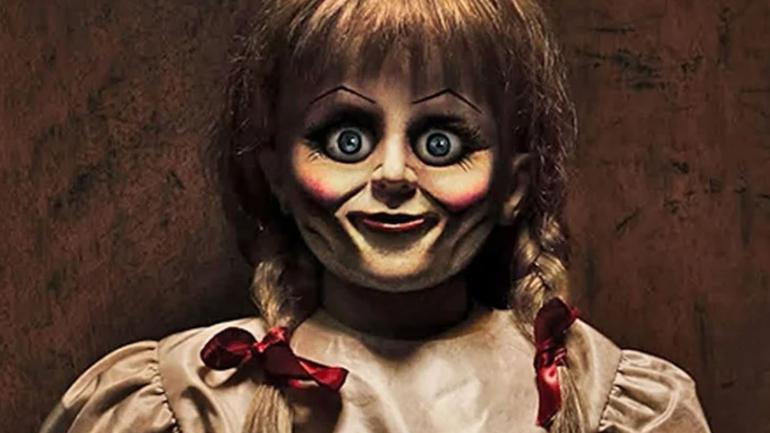
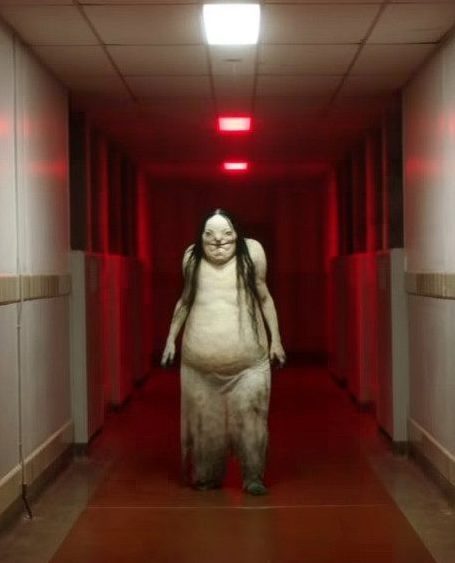

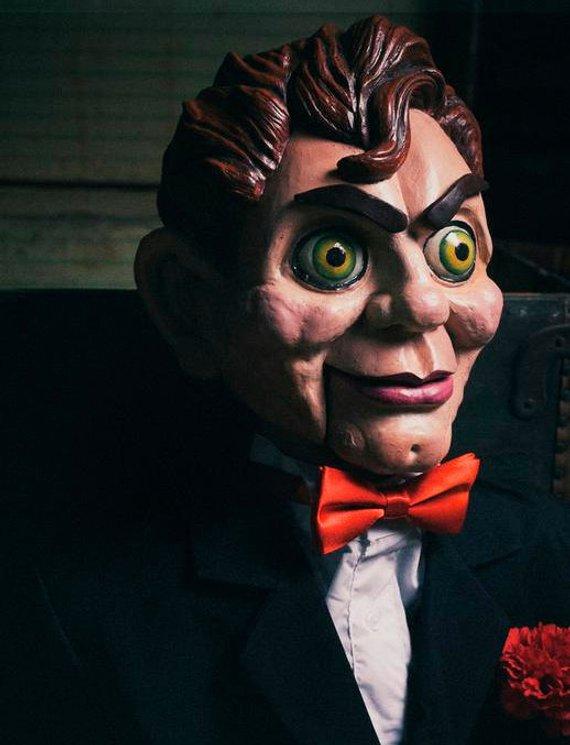

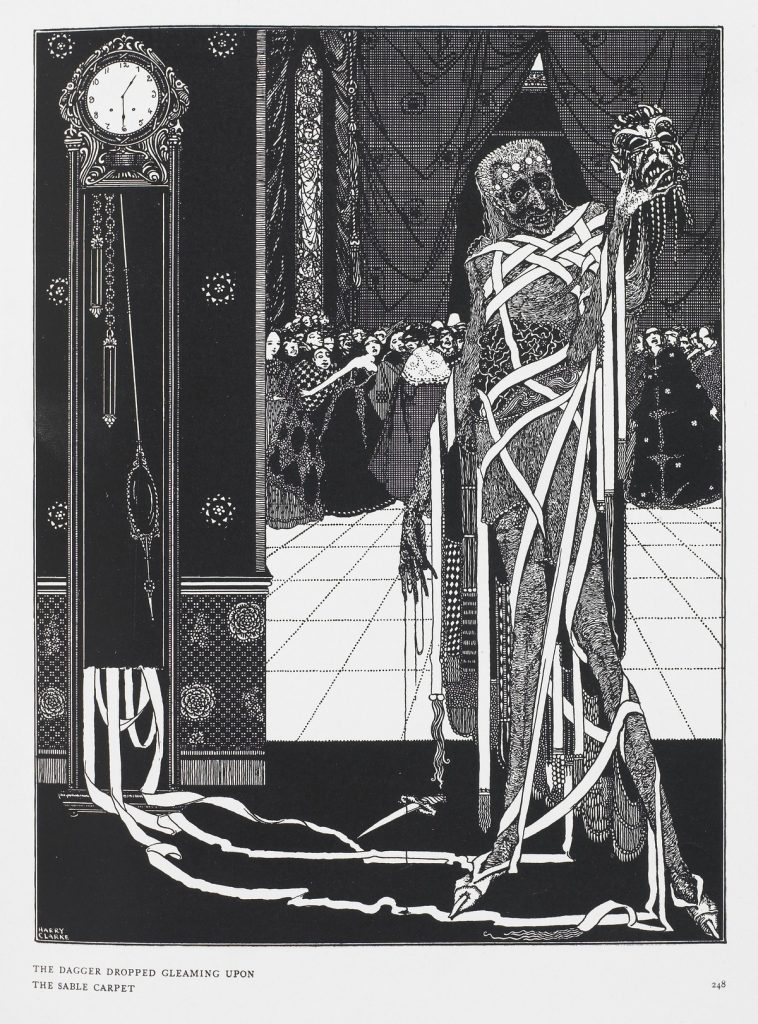
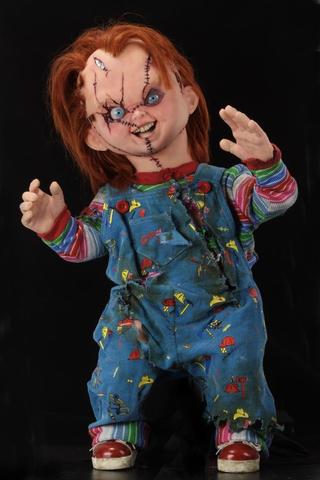
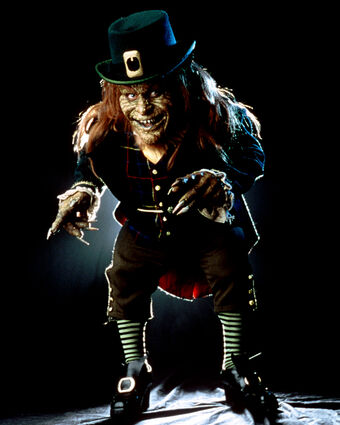
The questions I want you to think about as you’re going through the appetizer are:
- Do scenes and mood affect the perception of the grotesque body?
- How do these horror bodies differ from comedic bodies?
- Why do you think these bodies evoke such a discomfort or negative reaction?
- In respect to the bodies found not as horror characters but as horrific in the context of their world, do you find these bodies horrific or comedic?
- Part of ancient comedic production is masks, yet Annabelle and Chucky as dolls are creepy. Do you think comedy masks would evoke fear like they do?
I’m excited for your responses!
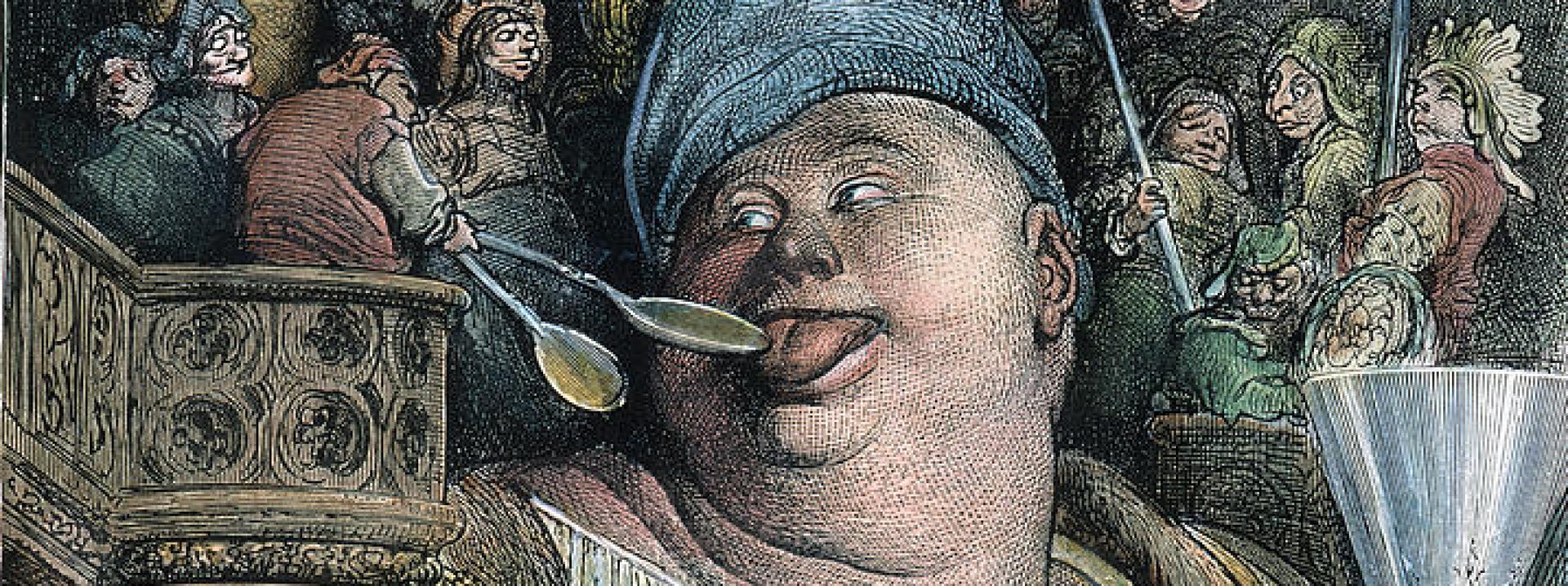
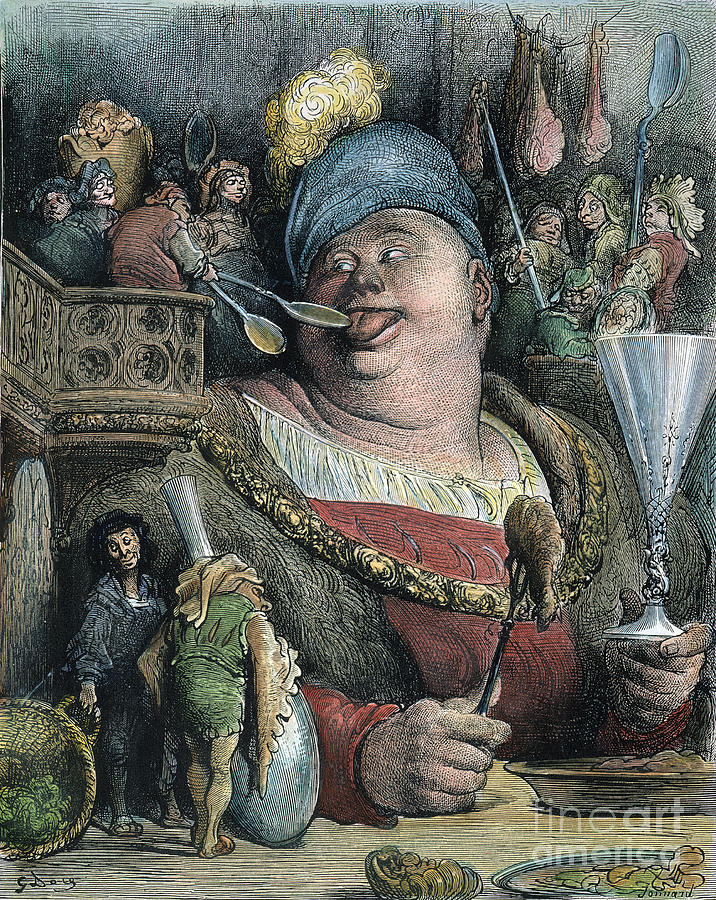
Now that you’ve brought these characters to my attention, the link between the grotesque and horror seems inevitable. I think the most obvious difference between these bodies and the grotesque/carnivalesque body is that there is, despite the presence of highly grotesque elements– I’m thinking here specifically of the wendigo(s) in Until Dawn (https://www.youtube.com/watch?v=D9AYJ0qopVY) and the vague through-line of cannibalism in the horror genre, which is maybe as death-into-life-universal-body-end-of-Fellini-Satyricon as you can get– the separation of the horrific body from the general population, making it un-univesal. The more I think about it, the more it seems like the violent, fatal imposition of the horrific body onto ours is the terrifying thing, but the line between that and the positive and utopian is hard to get at theoretically despite being very obviously the opposite. Of course the victims of these characters are unwilling, but so too were Encolpio and Ascylto (Italian accent intended) unwilling in sexual punishment, which we found pretty horrific in class, though Satyrica qualified as carnivalesque overall. What it seems to come down to is: what is the thing that makes the same action horrifying or joyful in different contexts? Is it an atmosphere of fear? If so, what does that atmosphere consist of? There’s also a seriousness in horror that isn’t in comedy, though there are horror movies/games/etc that don’t take themselves seriously. This is a really interesting genre to think about class concepts with!
This appetizer is really interesting to me– I’m a person with a very low tolerance for horror, so it’s fascinating to think about why similar traits may scare me in some contexts and make me laugh in others. To answer Helena’s question about why this happens, I think that it often has to do with the reactions of the characters within the movie/show/book/etc. For example, a figure like Pantagruel’s large, cow-devouring self could be viewed as horrifying, but he isn’t, because the characters around him are chill with it so we as readers are chill with it too. In most horror movies, on the other hand, the characters are reacting as though something is very wrong when they see horrific bodies, so we as viewers have the feeling that something is wrong as well. I think that this is a big reason why laughter is so important to the Carnivalesque, because I think that the presence or absence of laughter by the characters in a text/movie could be the sole distinguisher between whether it is funny or terrifying to the viewer/reader.
Having looked at all the pictures of horror bodies, I think an essential similarity among all of them is that those bodies are imitating human bodies. Whether it is a living monster or a doll, the shape of horror bodies seems to be made based on the structure of the human body. Compared with comedic bodies, horror bodies exaggerate or change one or a few crucial and visible elements of the physical human body while retaining the rest of human characteristics. When these physical distortions coexist with human characteristics, it is difficult for viewers to predict their behavior in a way they predict a normal human, thereby fear is generated. In the literary works we have read, which include comedic bodies, these comedic bodies are not imitations of human bodies but real human bodies. Although the comedic bodies also do have some exaggerated or grotesque body parts and organs, these uncommon features do not seem to negate their humanity.
I agree with Eve’s point that a lot of these characters you’ve pointed to imitate a regular human body, but there’s always something a little off or unnatural. A lot of these characters have exaggerated human features, such as the exaggerated old woman from The Shining, which is kind of grotesque, but I think the exaggeration emphasizes how unnatural these characters are rather than achieving a universalizing effect. This appetizer also made me think about the difference between the grotesque and body horror, and if there’s any crossover between the two or if they could coexist.
I don’t watch a lot of horror, but the thing that always creeps me out is when it’s someone who looks human but it’s just a bit unnatural. The example that comes to mind is the Exorcist. The person who’s possessed is a little girl, who you would normally expect to be harmless. She moves in unnatural ways that humans don’t move in, which is really unsettling. A major part of horror for me is subverting people’s expectations of the human body and how it moves and behaves.
I love watching horror movies and I am trying to figure out why the bodies in the images aren’t carnivalesque in these stories but they share the characteristics of the carnivalesque. While watching these movies we are removed from the stage so the footlights remain. However we still may feel afraid like the characters in the movie. Also these movies use the exaggerate grotesque. Laughter is another distinction brought up by Helena and Sophia. Laughter is necessary for the carnivalesque spirit. In horror fear takes the place of laughter.
I want to third Eve’s point that the stripping of humanity in horror films tends to morph exaggerated bodies from being funny to being scary. When I see something that I think should probably be human but then acts as a monster or randomly starts forming into some weird humanoid creature, it doesn’t really sit right.
I think another huge part of it for me is music. As a fun little bedtime thought experiment, I tried watching the woman in 237 scene from the shining (https://www.youtube.com/watch?v=E1NsA_FdbHg) with the sound muted and “Here Comes the Sun” by the Beatles playing in the background. At the bit where the guy (I’ve never seen the movie and don’t know names) notices that the woman has transformed, I actually started laughing! It may have just been the humor I found in the contrast between the music and video, but regardless, I was barely spooked and mostly having a pretty pleasant time. On this, I definitely noticed sometimes watching the Satyricon that in some of the odder scenes with not very uplifting music, I found myself watching in something akin to horror (maybe closer to great discomfort).
So to say the least, there’s definitely a consensus among everyone that part of what makes these characters scary or unsettling is the mood/atmosphere in which they’re found, and I agree! Part of what fascinated me in the topic is that you see a lot of the themes of horror in comedy (like clowns, masks, and unusual body happenings), but there’s just something off about them. Whether it’s strange music or distorted visuals, we know horror when we see it.
Do you think that part of the difference between horror and comedy is the presence of carnival? If so, do you have any examples like Jake as to when something that was supposed to be scary wasn’t after the atmosphere changed? If not, do you think that horror can exist in the carnivalesque world?
I’m thinking of clowns in particular: even when they’re supposed to be fun and light-hearted, they tend to scare the crap out of people, and they ambivalently seem to exist in both worlds. But do they really?
I actually had a similiar-ish experience when we watched Fellini-Satyricon– if there hadn’t been other people in the room laughing at incongruities and unexpected/strange things, I would have been offput by them in a more non-comic way. Also, working a lot in theater, seeing the same scenes over and over again drains any comic character out of them so much that none of the tech/management crew laughs by the third iteration, but when the audience comes in and laughs when they’re supposed to, suddenly everything is funny again. Neither of these media is a part of the horror genre, but maybe Bakhtin’s concept of popular laughter in the audience can help to explain the difference. If the horror audience is *willing* to laugh instead of be scared, maybe we’re in a comic and not horrific space, and the media is horrific which *doesn’t* encourage us to be willing in this way. What comes to mind in that regard is actually Cats 2019, which was visually and aurally VERY WEIRD AND OFFPUTTING, I SAW IN THEATERS AND CAN ATTEST TO THIS, but, if audiences choose to have fun with it, it could be very fun (here’s a link to an audience doing just that: https://twitter.com/KevinTPorter/status/1208084345790976001).
I know it’s not totally on concept with what you’re saying, but this makes me think about the fact that another pretty effective part of horror is people laughing when they aren’t supposed to. I was trying to imagine if being in a movie theater for a horror film where everyone laughed at the scariest bits would relieve any of the tension, and realized that I think I would find this to be the most disturbing part of the experience. This made me think about how villains often laugh at the times when the good guys (us) are supposed to be most afraid.
I began to think of instances where horror can be funny. Mostly when people are making comedy of the scenes in the movies. There are often tropes that appear among movies that could bring comedy and laughter to an audience. Like when someone is running from the “bad guy” and trips. Or even in Halloween movies where Michael Myers seems to always catch up to the person he is after WHILE HE IS WALKING. Moments like these provide comedic relief midst the fear. Although horror movies as a whole don’t fit the mood overall, there are moments of the carnivalesque in scenes.
This might be splitting hairs, but I think there can be different kinds of laughing-when-you-aren’t-supposed-to. An audience laughing at at a horror movie, for instance, is scary when it seems ill-intentioned, like villainous laughter (i.e. they’re taking joy in the cruelty of it). But audiences can also laugh and the ridiculous or incongruous aspect of horror without taking joy in the cruelty of it. I used to watch a lot of horror game lets plays on YouTube for games I could NEVER play alone because I’d be scared out of my mind, but watching through the lens of one or several people making jokes at their own expense really relieves the tension. When the I laugh in those instances, I’m not delighting in the suffering of the fictive characters or the player themselves, but in the absurdity of the moment. I think there’s room in the latter for some kind of carnivalesque spirit.
I believe that the presence of carnival does not necessarily differentiate horror and comedy, and it depends on how the audiences think about horror and comedy. By watching “This is Halloween” again, some childhood memories came back to me. I watched The Nightmare Before Christmas before I had a sense of Western culture, and I thought it was the most horrible movie in this world(but I like it now). And also, I could not watch any kind of circus performance because of my coulrophobia and phobia of seeing people risking their life or seeing any kind of weird performances(and still I don’t watch them). While many friends of mine enjoyed the carnivalesque moments from those performances, the only thing I sensed was fear. And since I cannot spiritually engage in carnivals like circuses, I find it to be on the side of horror, while many people could find it on the comedy side.
This is a really interesting perspective on how expectation and individual interpretation of certain things can determine whether they are horror or comedy. I had almost the opposite experience with The Nightmare Before Christmas: when I watched it as a kid, it seemed very normal to me, maybe because it plays on common childhood thoughts and fears, but when I watched it again later I realized it was pretty terrifying (still one of my favorite movies though). I think the reason this movie is still tolerable for me even though it uses a lot of scary elements is because I go into watching it with the knowledge that it is meant to be for kids, and is meant to be enjoyable. The Nightmare Before Christmas mixes a lot of scary stuff with a lot of very cute stuff (musical numbers, love story, adorable ghost dog, etc.), and this softens the blow. I think that as a kid I was able to focus on these elements rather than the scary stuff, and my expectations changed how I reacted to it over time, if that makes sense.
I definitely think that the atmosphere changes whether or not something is scary, and I agree with Helena’s point about how watching people play and make fun of horror games on YouTube takes something that would be scary and makes it less so. Another example is watching horror movies with friends vs. watching alone. Watching alone you’re much more likely to get freaked out while if you’re watching with friends you can sort of joke about it together and take a lot of the fear out of it.
I also really like Tia’s point about how humor is injected into the horror genre through the use of tropes. One example that I thought of was the Sharknado series (I watched all six movies last summer and it’s definitely worth the watch) which takes a lot of tropes from the horror, action, and sci-fi genres to parody all of them. These movies also incorporate some grotesque aspects in the ridiculous abundance of sharks and the outlandishness of the situation.
This might be kind of a strange example, especially because I’ve never seen these movies, but this comment reminded me of movies that are intentional parodies of the horror genre, like the movie “Scary Movie.” I feel like these kinds of movies are an interesting lens to look at the merging of comedy and horror, because it is purposely taking tropes that we associate with horror (scary music, the paranormal/supernatural, death), and making these things into comedy through exaggeration and over-acting. I think that exaggeration is a key point here because for me, the scariest horror movies are the ones that seem almost realistic, or like something that could plausibly happen. So when these tropes are exaggerated, it becomes much more comedic. I think this is relevant to the conversation about the Carnivalesque merged with horror because exaggeration is such an important part of the Carnivalesque/Grotesque. But these movies also point to the fact that horror and comedy have a lot of potential to cross over into each other as genres.
I agree with Sophia point about exaggeration in that it seems to really flourish in comedic settings, but I also think a lot of the horror that Alice showed in the original post played with exaggeration in some way. There seems to be some difference between things exaggerated for fun and things exaggerated to cause fear, and one of the big things I’ve taken from this conversation is that it’s hard to discern what makes those two things different. Again, my instinct is that there’s something more *serious* in the former than in the later, but I have no idea how to quantify that in the actual content.
I think everyone made really interesting points! After reading all of your comments, I think we agree that while horror itself isn’t necessary carnivalesque, you can have a carnivalesque experience with it depending on the way you view it.
When I went into this appetizer, I didn’t really have an answer that wholly convinced me about grotesque horror, and I think that there’s still so much to discuss on this topic! But the points made about how the atmosphere and viewing experience are what makes horror what it is are definitely getting there. After this conversation, I wonder if someone who didn’t know what horror was supposed to do viewed horror in a more carnivalesque environment would find it as scary as it is supposed to be. Of course, like the points brought up about how horrific grotesque bodies distort what we see as normal bodies are part of the horror, I don’t think it would wholly work, but perhaps the reaction would be diminish and the characters themselves would have to actually be scary to be effective. A lot of horror works off of jump scares, but we play peek-a-boo and hide-and-seek with children. Together with the change of atmosphere, I think the distortion of the norm may get the conversation further.
Overall, I was really pleased with how this conversation went, and while I don’t think we solved all the answers, I think if we had infinite time to discuss it, we’d get pretty damn close.